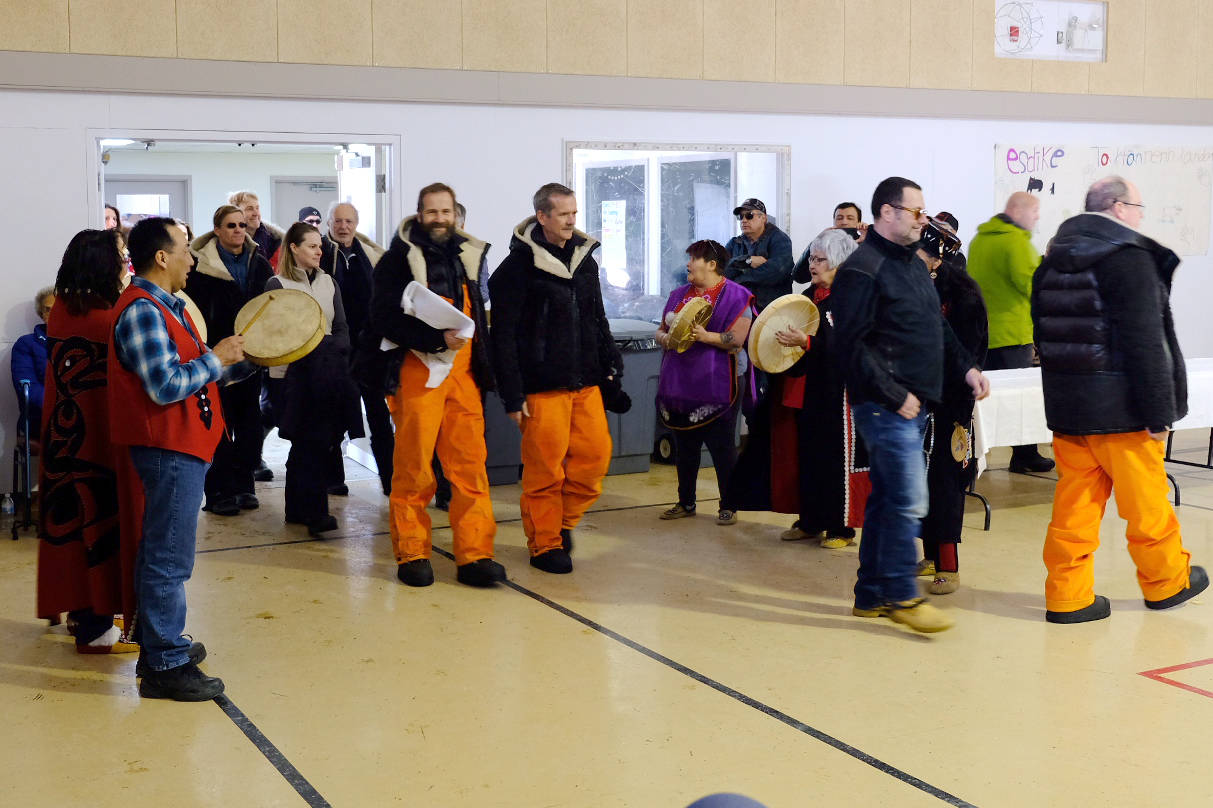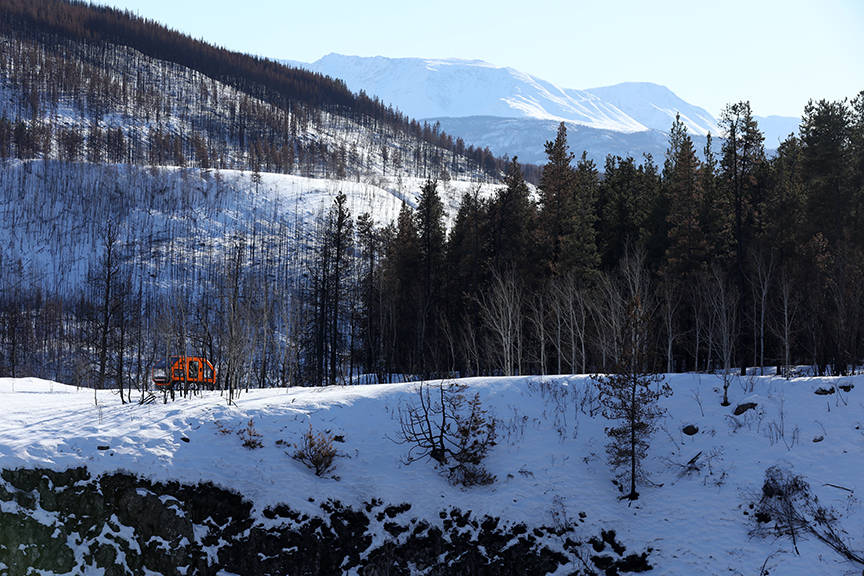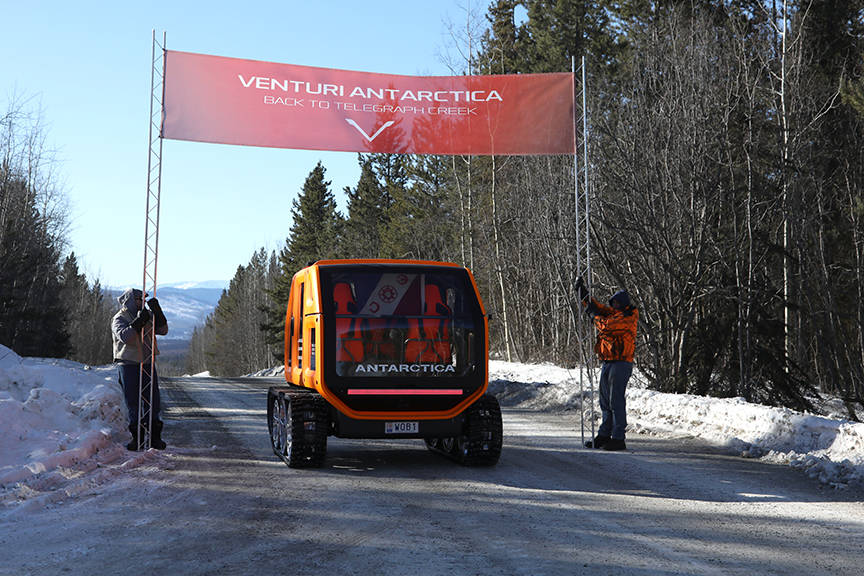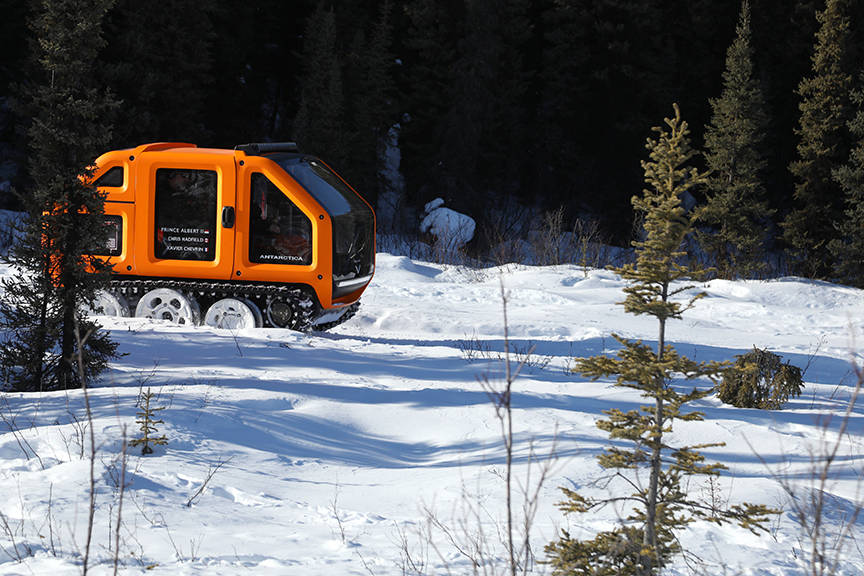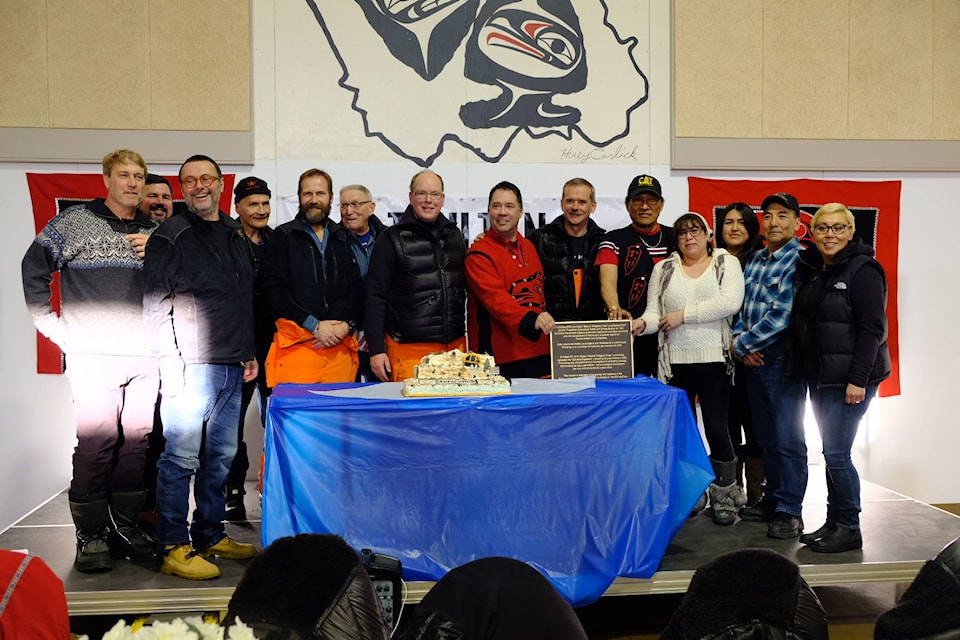Still recovering from the summer wildfires that destroyed more than 30 per cent of their village, residents of Telegraph Creek in Tahltan Nation Territory were uplifted last week by some serious star power.
Canadian astronaut Col. Chris Hadfield, Monaco’s Prince Albert II and Xavier Chevrin, a president for one of the world’s leading high-performance electric automakers, Venturi Automobiles, rolled into the tiny Tahltan community of 300 for field tests of the Venturi Antarctica, the first-ever zero emissions electric vehicle purpose-built for polar exploration.
The visit was closed to the press but open to all Tahltan members, about 150 of whom travelled from across the region to see the Antarctica, and meet its occupants.
“A lot of people were really excited — you had the Prince of Monaco and Chris Hadfield and this amazing machine,” says Tsema Igharas, a Vancouver-based Tahltan member who also designed the logo for the mission. “But it was also celebratory in the sense that it was a reception for the community. It was a mutual celebration of having [the Antarctica’s] accomplishment in Telegraph Creek, and also to have the community together.”
VIDEO: Telegraph Creek residents celebrate going home
During a visit to the icy continent in 2009, Prince Albert II conceived the idea for the Antarctica as a solution for scientists to access their research areas without polluting the sites. He approached Monaco-based Venturi to develop the concept.
An engineering team conducted a week-long series of tests in the Telegraph Creek area before the the Sovereign, Hadfield and Chevrin arrived for a ceremonial 42-kilometre drive from Dease Lake to Telegraph Creek, symbolically finishing the failed Bedaux expedition of 1934.
In that year the French millionaire Charles Eugene Bedaux attempted to blaze a trail through the bush from Edmonton to Telegraph Creek, then famous for the Yukon Telegraph Line, to field-test five Citroen half-track vehicles. After four months the extreme terrain forced the party back.
Dubbed “Back to Telegraph Creek” the short Venturi excursion is part of the Venturi Global Challenges series, expeditions inspired by daring automobile adventures of the last century to test Venturi’s electric vehicle technologies.
This is also believed to be the focus for a documentary film, helmed by Luc Jacquet, the Oscar-winning director of 2005’s international hit March of the Penguins, who is reported to have travelled from Dease Lake to Telegraph Creek with the Venturi team.
Prior to the team setting out on their mission, Instagram user bria_rose_ posted a video of a singalong with Hadfield in Dease Lake.
The next day after the 42-km mission the three Antarctic pilots were invited to a service at Telegraph Creek’s Anglican Church, followed by lunch in the community hall and a ceremony of traditional Tahltan dancing and signing.
“Chris was amazing,” says Tahltan Band Chief Rick McLean. “People brought books for him to sign and were taking pictures with him and he never said no. He was just so gracious. It was a very good afternoon with him and the prince —the whole team was very respectful. Those guys are awesome.”
The Venturi team also gave the Tahltan band a $76,000 donation for the Telegraph Creek Rebuilding Fund, bringing the fundraising total up to $750,000 of the $1-million goal, according to McLean. The team then presented a plaque commemorating the new relationship, outlining the Antarctica mission’s shared vision with the Tahltan Nation.
READ MORE: Tahltan Central Gov. reacts to $250K donation
“We talked about doing this last year, before the wildfires happened,” says McLean. “As keepers of the land, the work we’re doing now is to understand climate change. The research that’s being done in Antarctica also affects us and affects the world.”
Climate scientists warn wildfires like last season’s, B.C.’s largest on record, may become more frequent as the global average temperature rises due to climate change. In the massive 1,200-km blaze that swept through Tahltan territory last summer 27 structures were consumed. Combined with regional district land, roughly 160 structures were lost in the area total. The breadth of impacts on the landscape and fish and wildlife habitats is still being studied.
“The timing of the [Antarctica] visit was astounding,” McLean says. “It was such an uplift to the community. It was our first community event since the wildfires…so it was a really good start toward healing and getting some positive vibes going through the community again. It was a godsend for sure.”
READ MORE: Telegraph Creek evacuees home by Christmas
The Canadian leg of the research project is followed by successful field tests in the French ski resort of Auron. The vehicle will now travel to Antarctica without Canada’s celebrity astronaut for further testing.
quinn@terracestandard.com
Like us on Facebook and follow us on Twitter
